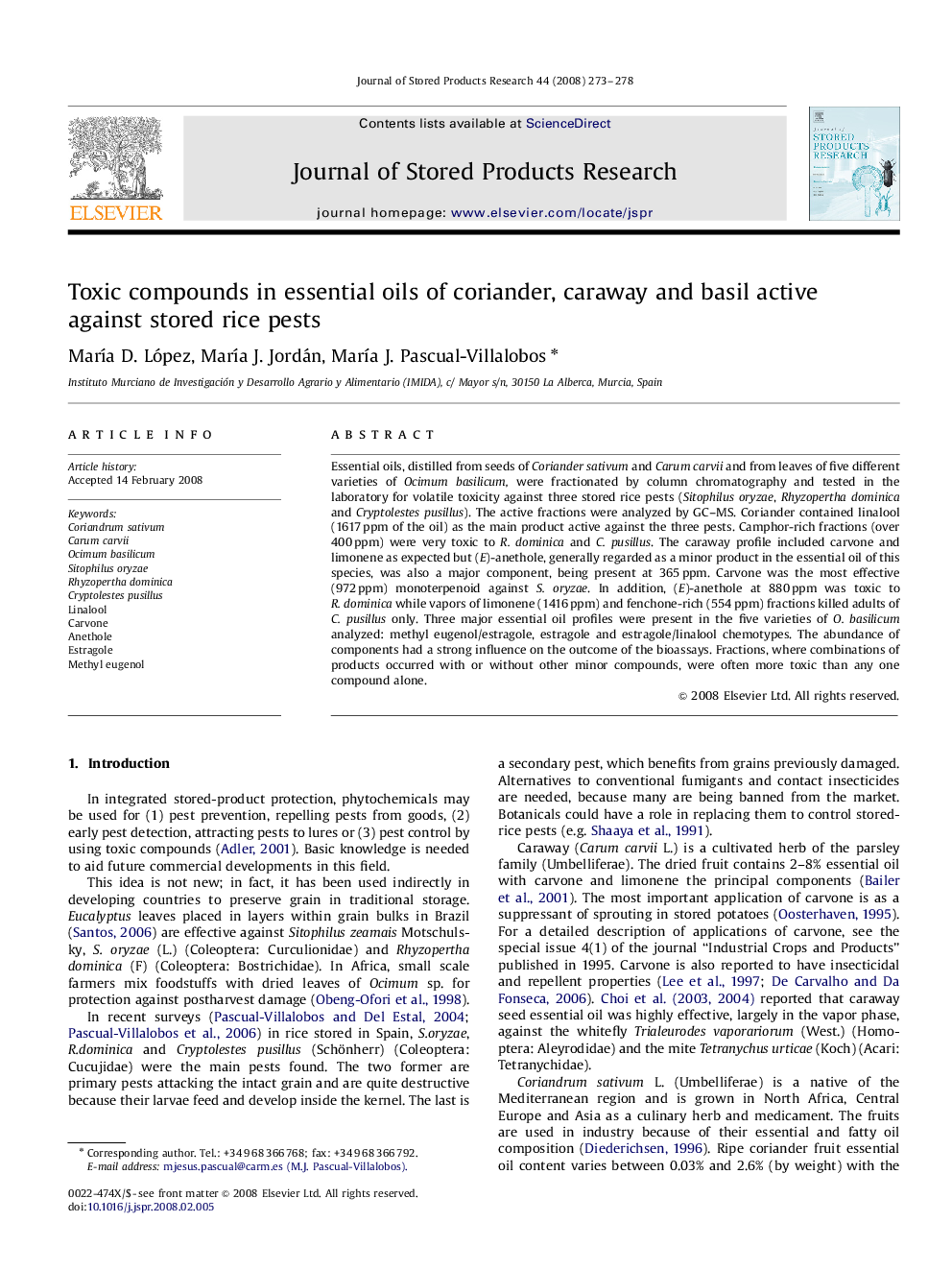| Article ID | Journal | Published Year | Pages | File Type |
|---|---|---|---|---|
| 4517481 | Journal of Stored Products Research | 2008 | 6 Pages |
Essential oils, distilled from seeds of Coriander sativum and Carum carvii and from leaves of five different varieties of Ocimum basilicum, were fractionated by column chromatography and tested in the laboratory for volatile toxicity against three stored rice pests (Sitophilus oryzae, Rhyzopertha dominica and Cryptolestes pusillus). The active fractions were analyzed by GC–MS. Coriander contained linalool (1617 ppm of the oil) as the main product active against the three pests. Camphor-rich fractions (over 400 ppm) were very toxic to R. dominica and C. pusillus. The caraway profile included carvone and limonene as expected but (E)-anethole, generally regarded as a minor product in the essential oil of this species, was also a major component, being present at 365 ppm. Carvone was the most effective (972 ppm) monoterpenoid against S. oryzae. In addition, (E)-anethole at 880 ppm was toxic to R. dominica while vapors of limonene (1416 ppm) and fenchone-rich (554 ppm) fractions killed adults of C. pusillus only. Three major essential oil profiles were present in the five varieties of O. basilicum analyzed: methyl eugenol/estragole, estragole and estragole/linalool chemotypes. The abundance of components had a strong influence on the outcome of the bioassays. Fractions, where combinations of products occurred with or without other minor compounds, were often more toxic than any one compound alone.
